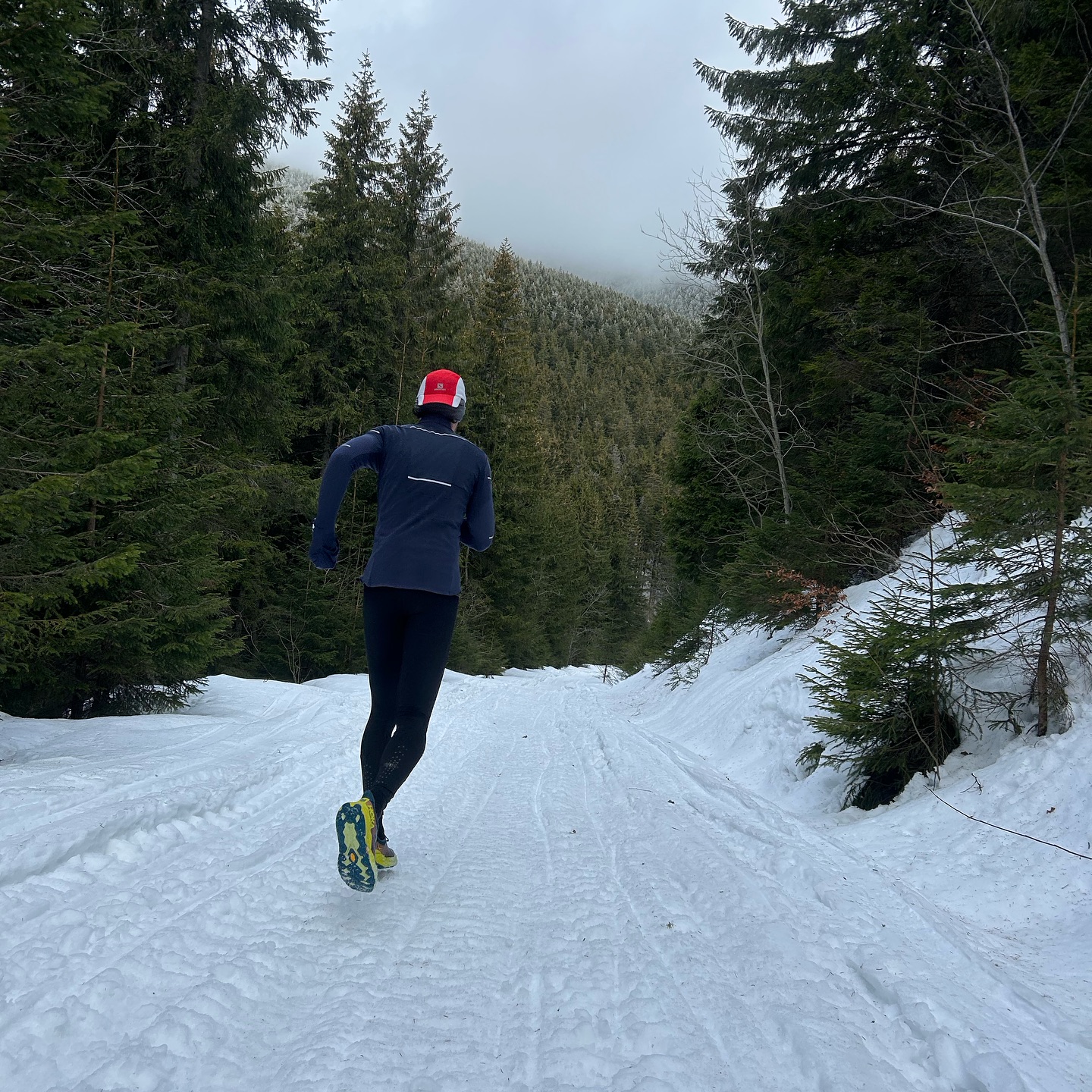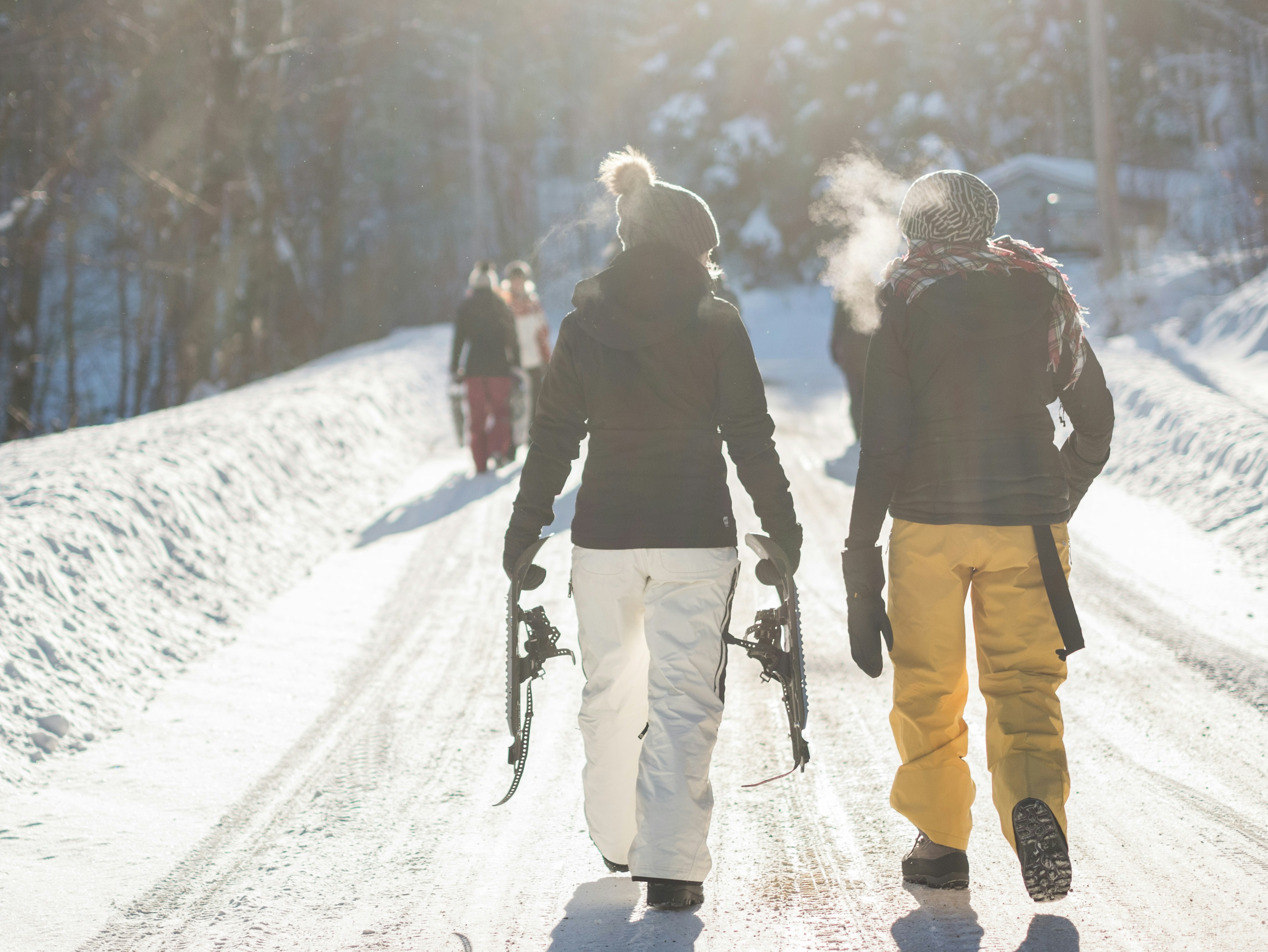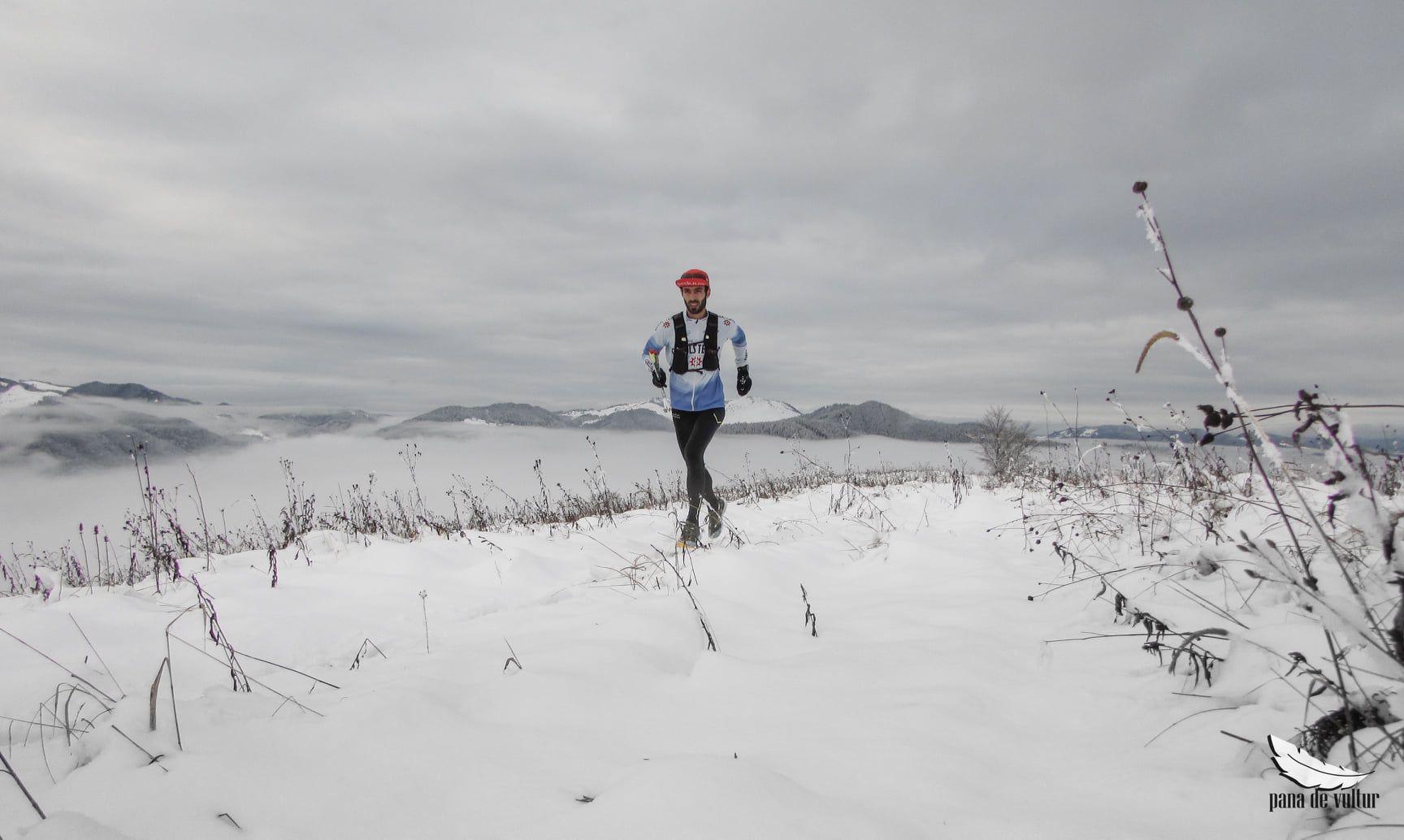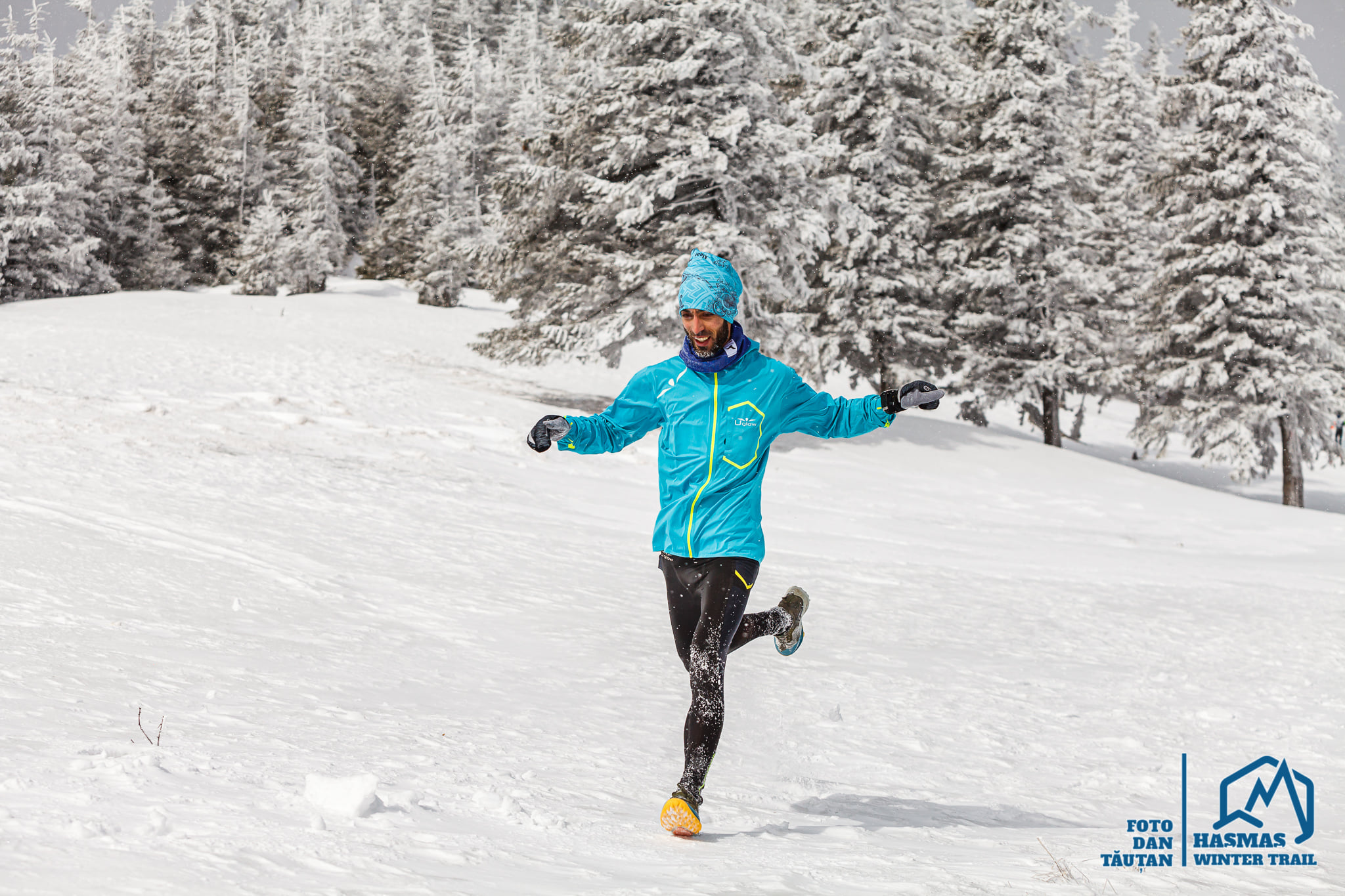Is it Bad to Breathe in Cold Air When Running? - Discover the Effects and 3 Tips for a Healthier Winter Run
In this article:
-
What happens when we breathe cold air while running?
-
How to keep your lungs and throat safe
-
When to avoid running in the cold?
-
FAQ
What happens when we breathe cold air while running?
As winter arrives, it brings the cold with it, and many runners - especially the new ones - have concerns about running outside because of the cold air that may affect their health. The same question for every runner arises at least once: What effects can occur when I breathe in the cold air while running?
I am sure that, if not from you, then from other runners—especially those experiencing their first winter—you have heard phrases like “ I don’t want to run because I’ll get sick from the cold air” or “Be careful breathing in the cold air, it’s not good for your throat” - While there’s some truth in certain cases, we need to emphasize that it’s not the cold air that is harmful. “Not the cold air, then what?” - you may ask. Well, let’s find out more precisely what happens.
The colder it gets, the drier the air is
Yes, you heard correctly, the problem is that the air is dry. It’s not the cold air itself that is harmful, rather, it’s the dry air that occurs when the temperature drops.
You might wonder, 'Why is cold air not harmful?' The answer lies in your nose—think of it as a respiratory system in action. Its primary functions are to warm, filter, and moisturize incoming air. As you inhale the cold air, your nose immediately humidifies and warms it through the cells in your trachea before reaching your lungs. Let’s see what are the side effects of breathing in the cold, dry air.
The side effects of breathing cold and dry air
When we are running in the cold, as we already know the air is dry, and this prompts the body to both warm and humidify each breath, so it has quite a hard job.
The main side effects of inhaling cold and dry air can manifest a raw or burning, dry sensation in your throat and windpipe, some may also experience a dry cough. This occurs more often when you are dehydrated, causing your cells to struggle with humidifying the air.
If you are running in really cold temperatures like -15 Celsius / 5 Fahrenheit or worse, the air that you breathe while running is so cold and dry, that the passageways through which the air flows actually can constrict. The cold temperature causes this constriction, reducing the amount of air reaching your lungs. (we discuss the consequences in the FAQ section)

This phenomenon is similar to what happens during an asthma attack. Even if you don't have asthma, you may experience winter-related breathing issues under certain conditions.
If you consider yourself a strong, and healthiest runner, keep in mind that even the healthiest runners may experience irritation in their lungs and throats and breathing issues, especially in particularly cold and dry air or when there's an increased volume of air breathed in and out during outdoor exercise.
If you have recognized any of these symptoms on yourself by now, don't worry, in the following, we will see what can we do to avoid them.
It's not the cold air itself that is harmful, but rather the dry air that occurs when the temperature drops. The main side effects are throat irritation and breathing issues, but other problems can arise.
How to keep your lungs and throat safe
In the next section, you will find some easy-to-apply but very essential tips to follow if you want to prevent these discomforts while you are running in the cold.

1. Wear a protective layer or scarf over your nose and mouth
The first thing you can do to prevent the cold and dry air from irritating your throat and lungs is to wear something that covers your nose while running outside.
Wearing a mask during winter running has a dual purpose. It traps moisture from our breath and creates a protective barrier against dry air. The moisture acts as a filter as we inhale, minimizing the impact of cold air on our airways and lungs. This not only prevents discomfort but also keeps the face and throat warmer.
We recommend choosing a loosely draped, breathable gaiter to cover your mouth and nose. This will effectively warm up the air and add moisture, improving your overall breathing experience. Please, refrain from using a full ski mask, as it can become wet, obstruct your vision, and overheat inhaled air, making breathing more challenging.
-
Warming up before every run is essential.
You need to warm up…I know, I understand that many of us, very often, are simply too lazy to warm up before runs, but this time when the temperatures drop warming up is more important than ever.
You do not need to do something crazy, just some dynamic warm-up before each run to avoid the negative effects of cold and dry air. Consider incorporating a quick 10-15-minute dynamic warm-up before every run. This routine that I will show you targets multiple muscle groups, elevating your internal temperature, and priming your body for the upcoming run. It loosens and warms up your body, including the trachea, while boosting your heart rate and respiratory system.
Here are some examples of how to warm up properly before every run—you can do this inside your home or outside: jumping jacks, leg swings, bodyweight squats, lunges, arm circles, high knees, and butt kicks.

3. Hydration is key—drink up!
I'm sure you've heard many times already that you need to pay attention to proper hydration during running, and you might be fed up with it. However, this time it's even more crucial because we can easily forget to drink when we don't feel the immediate need. Allow me to explain why.
It's a common misconception that during chilly winter days, you may not need as much water because it’s not so hot, and also you're not visibly sweating like when it's warmer. But, the cold weather can trick. The dry air contributes to water loss, which can lead to dehydration.
In the absence of humidity, breathing in dry air means you’re not taking in any water, meaning, the more you breathe, the more water you lose. This loss of body water can cause dehydration in the cells of the trachea, leading to irritation.
Combat these effects by consistently drinking water throughout the day aim for at least 1.5-2 liters of water. Keep a small flask handy during your run and sip, even when you don't feel thirsty. Depending on the intensity of your run, aim to consume anywhere from 0.3 to 1.5-2 liters during more challenging workouts. Stay fueled, stay hydrated, and enjoy your winter runs with ease!
To enhance your wintertime outdoor runs and avoid the side effects of cold, dry air, you should properly warm up before every run, stay hydrated throughout the day and while running, and consider wearing something to cover your nose and mouth
When to avoid running in the cold?
If you have chronic lung diseases like asthma or chronic obstructive pulmonary disease, you may experience breathing difficulties when running outside in the cold. Why? If you are suffering from any of these conditions, your airways are already inflamed, and the cold, dry air irritates them even more, causing your airway muscles to constrict, narrow, and become clogged with mucus. We suggest that if you have lung issues, move your workouts indoors when temperatures drop below 0 degrees Celsius/32 degrees Fahrenheit.
Always prioritize safety and consult with a healthcare professional if you have concerns about exercising in cold weather.
Frequently Asked Questions
Q: Can your lungs get frozen?
Even in the coldest place on the planet, your lungs cannot freeze. When you breathe in, your nose and mouth warm the entering air, so by the time it reaches your lungs, it has been warmed to near your body temperature.
Q: How can I properly breathe while running in the cold?
Your breathing technique needs to be the same in both summer and winter. - focus on deep belly breathing and breathe through both your mouth and nose, but mainly your nose. The only downside to this is that you can't get as much oxygen if you only breathe through your nose, which is a significant disadvantage, especially during a more intense workout.
If you're on an easy run, try to breathe through your nose instead of your mouth when possible. Your nose is more effective at warming and humidifying incoming air compared to the mouth.
Q: Can I get sick just by inhaling cold air while running?
There is no known evidence that running in the cold and breathing cold air adversely affects your immune system. Simply inhaling cold air during your runs doesn't directly cause infections. However, if you already have throat or chest issues, running in freezing temperatures may worsen these conditions.
Q: Why do I have a runny nose when running in the cold?
People often associate this symptom with illness, but when running in the cold, a runny nose is a common occurrence due to cold-induced rhinorrhea. The body responds to the chilly air by producing additional mucus as a natural mechanism to warm and humidify the air you breathe. This increased mucus production helps protect the respiratory system from the cold temperatures.
Q: Does cold air affect my performance?
There is no consensus about whether exercising in cold air significantly impacts running performance compared to warmer temperatures, however, one study observed that cold air reduced performance by 5% at -20 degrees Celsius.
If you are reading this, you have most likely read through the article, which I would like to thank you for, and I hope you found useful information in it. I wish you healthy running and many kilometers. - thewanderruner
